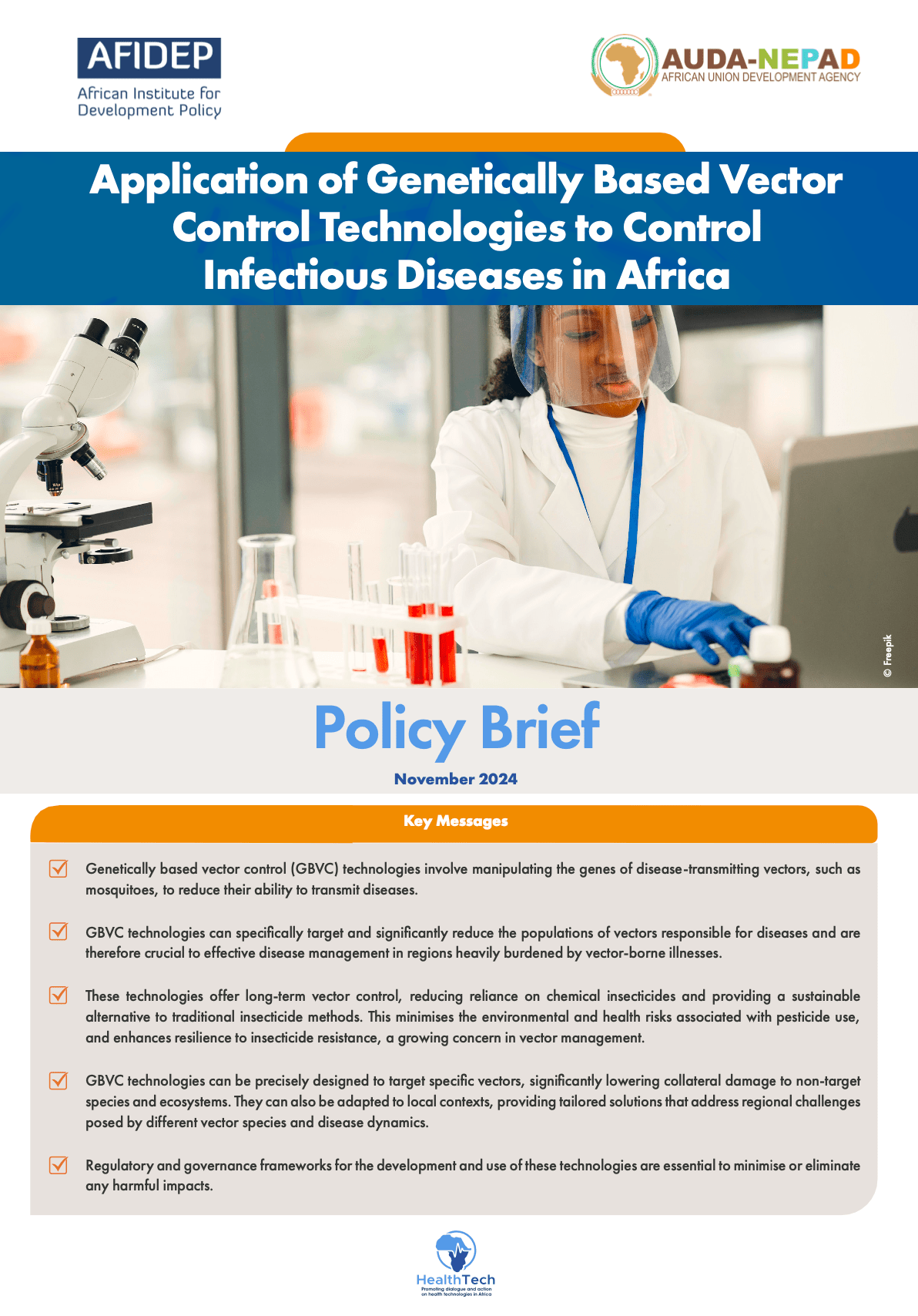Genetically based vector control (GBVC) technologies are advanced tools developed through genetic manipulation to control populations of disease-carrying mosquitoes, flies, and ticks. These technologies present promising solutions for combating vector-borne diseases in Africa, offering benefits such as targeted vector control, long-term effectiveness, reduced insecticide resistance, minimal ecological impact, and compatibility with other vector management strategies.
Forms of GBVC Technologies include:
- Sterile Insect Technique (SIT): Biological pest control that involves the mass-rearing and release of sterile insects into the wild.
- Incompatible Insect Technique (IIT): Pest control strategy that involves the release of laboratory-reared insects with genetic incompatibilities into wild populations.
- Gene drive technology: A genetic engineering approach that increases the likelihood that a specific gene will be passed on to the next generation, effectively spreading that gene rapidly through a population.
- RNA Interference (RNAi): A biological process used to regulate gene expression by targeting and degrading specific messenger RNA (mRNA) molecules, thereby preventing their translation into proteins.
- CRISPR/Cas9-Based genetic modification: A revolutionary tool for altering DNA within living organisms.
- Wolbachia-based strategies: Use of the Wolbachia bacteria to control insect populations and mitigate the spread of vector-borne diseases. Wolbachia are intracellular bacteria that infect many arthropods, including mosquitoes.
Potential Benefits of Using GBVC Technologies in Africa
- It leads to substantial reduction in vector populations, targeting diseases like malaria, dengue fever, and Zika virus.
- It targets specific vectors, reducing impacts on non-target species and ecosystems.
- It has the potential for long-term, sustainable control of vector populations, reducing the need for repeated interventions.
- It offers an alternative to chemical insecticides, minimising environmental and health risks and reducing resistance.
- It entails flexible strategies tailored to specific regional vector species and disease contexts.
- It can be combined with other public health measures for a comprehensive vector control approach.
Examples of Practical Application of GBVC in Africa
- Burkina Faso explores genetically modified mosquitoes to combat malaria and dengue.
- Tanzania uses the Sterile Insect Technique (SIT) for managing mosquito and tsetse fly populations.
- The Zanzibar Malaria Elimination Programme (ZAMEP) explores genetically modified mosquitoes as part of its malaria control strategy.
- In Nigeria, there is the use of genetically engineered bacteria to inhibit pathogen transmission in mosquitoes.
- Uganda has explored the use of CRISPR-based gene drive technology for vector control to target disease-transmitting insects like mosquitoes.
- In Kenya, researchers at International Centre of Insect Physiology and Ecology (ICIPE) are investigating genetically modified mosquitoes as a potential tool for controlling malaria and other mosquito-borne diseases.
Recommendations for Policymakers on Implementing Effective GBVC Strategies
- Invest in research and development to enhance technology efficacy and safety.
- Foster partnerships with research institutions and NGOs to advance GBVC research and development.
- Implement education programmes to secure public support at the community level.
- Establish guidelines and regulatory frameworks for safe and ethical use.
- Integrate GBVC with other interventions to maximise on the benefits.
- Ensure respect for human rights and social equity through ethical adherence.
- Assess the impact on health outcomes and vector populations
By focusing on these areas, African countries can significantly advance the deployment of GBVC technologies, with a focus on their efficacy and safety. This comprehensive approach will lead to improved vector control, reduced disease transmission, and better public health outcomes across Africa.
